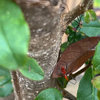Japanese beetles- best way to get rid of them?
riverminty
16 years ago
Featured Answer
Sort by:Oldest
Comments (23)
justaguy2
16 years agoRelated Professionals
South Elgin Landscape Architects & Landscape Designers · San Juan Landscape Architects & Landscape Designers · Lake Saint Louis Landscape Contractors · South Hackensack Landscape Contractors · Tehachapi Landscape Contractors · West Orange Landscape Contractors · Yuba City Landscape Contractors · Lauderdale Lakes Landscape Contractors · Vadnais Heights Landscape Contractors · Fredericksburg Decks, Patios & Outdoor Enclosures · Clute Decks, Patios & Outdoor Enclosures · Jupiter Decks, Patios & Outdoor Enclosures · Lake Morton-Berrydale Decks, Patios & Outdoor Enclosures · Minneapolis Decks, Patios & Outdoor Enclosures · Southampton Decks, Patios & Outdoor Enclosuressteve2416
16 years agoKimmsr
16 years agoled_zep_rules
16 years agocalifornian
16 years agoriverminty
16 years agojsfink
16 years agooutsiders71
16 years agooofahgatoofah
16 years agogauras
16 years agoblueheron
16 years agondstitch
15 years agospat72
15 years agofriedabyler
15 years agoKimmsr
15 years agospat72
15 years agobethanymackey_yahoo_com
12 years agowayne_5 zone 6a Central Indiana
12 years agogstrader1969
9 years agolkzz
9 years agoyupislyr
9 years agowayne_5 zone 6a Central Indiana
9 years ago
Related Stories

EDIBLE GARDENSNatural Ways to Get Rid of Weeds in Your Garden
Use these techniques to help prevent the spread of weeds and to learn about your soil
Full Story
DECLUTTERINGDownsizing Help: How to Get Rid of Your Extra Stuff
Sell, consign, donate? We walk you through the options so you can sail through scaling down
Full Story
DECORATING GUIDESLose It: 4 Ways to Get Rid of Your Old Carpet
Try one of these earth-friendly tips before stuffing your dingy carpet or rug in the trash
Full Story
GARDENING AND LANDSCAPING4 Good Ways to Get Rid of Mosquitos in Your Yard
Stay safe from West Nile virus and put an end to irksome itches with these tools and methods for a porch, patio or yard
Full Story
MOST POPULARHow to Get Rid of Those Pesky Summer Fruit Flies
Learn what fruit flies are, how to prevent them and how to get rid of them in your home
Full Story
DECORATING GUIDESUse It or Lose It: How to Get Rid of Old Keys
Clean out your junk drawer by getting rid of keys in an earth-friendly way
Full Story
DECORATING GUIDESLose It: How to Get Rid of Old Light Bulbs
When the light goes out, you'll want to get rid of the bulb safely. Here's how
Full Story
MORE ROOMSHome Tech: Getting Rid of Wires Without Sacrificing Sound
Wireless home technology still isn't perfect, but new products are giving audiophiles choices
Full Story
DECORATING GUIDESLose It: How to Get Rid of a Mattress
Updating your bedroom? Here's how to donate, reuse or recycle that mattress — and keep it out of the landfill
Full Story
LANDSCAPE DESIGNThe 7 Best Plant Types for Creating Privacy and How to Use Them
Follow these tips for using different kinds of plants as living privacy screens
Full StoryMore Discussions



Krista_5NY